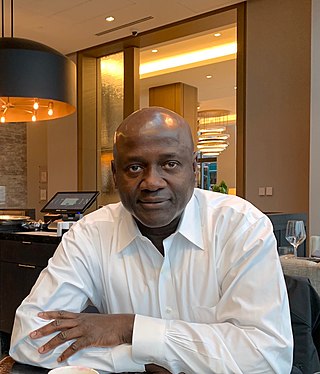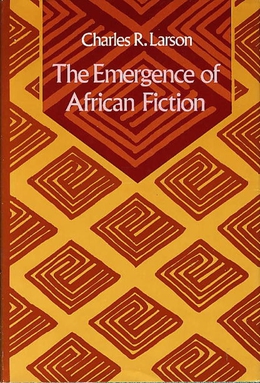The Senegambia is, in the narrow sense, a historical name for a geographical region in West Africa, which lies between the Senegal River in the north and the Gambia River in the south. However, there are also text sources which state that Senegambia is understood in a broader sense and equated with the term the Western region. This refers to the coastal areas between Senegal and Sierra Leone, where the inland border in the east was not further defined.

The music of the Gambia is closely linked musically with that of its neighbor, Senegal, which surrounds its inland frontiers completely. Among its prominent musicians is Foday Musa Suso. Mbalax is a widely known popular dance music of the Gambia and neighbouring Senegal. It fuses popular Western music and dance, with sabar, the traditional drumming and dance music of the Wolof and Serer people.
Alhaji Bai Konte (1920–1983) was a jali from Brikama, Gambia. His father, Burama Konte, composed the anthem of the 19th century Senegambian hero Mansumaneh Yundum, Yundum N'ko. It was from that piece that the anthems of Sheriff Sidi Hydara and Nyansu Mbasse originated. Burama Konteh was a well-known kora player of his generation. Bai Konte was a regular on Radio Gambia and Radio Senegal's joint program called Chossani Senegambia in the 1970s. He and other griots such as Jali Nyama Suso and Alhaji Abdoulaye Samba used to play live music during the show. Bai Konteh had narrated many epics on that show including the epic of King Abdou Njie and his griot and advisor Ibra Faye. Prominent broadcasters of that show included Alhaji Alieu Ebrima Cham Joof, Alhaji Assan Njie and Alhaji Mansour Njie.

The Wolof people are a West African ethnic group found in northwestern Senegal, the Gambia, and southwestern coastal Mauritania. In Senegal, the Wolof are the largest ethnic group (~43.3%), while elsewhere they are a minority. They refer to themselves as Wolof and speak the Wolof language, in the West Atlantic branch of the Niger–Congo family of languages.
African literature is literature from Africa, either oral ("orature") or written in African and Afro-Asiatic languages. Examples of pre-colonial African literature can be traced back to at least the fourth century AD. The best-known is the Kebra Negast, or "Book of Kings."
Mbalax is the national popular dance music of Senegal and the Gambia. In the 1970s, mbalax emerged as the distinctive sound of postcolonial Senegal. Derived from a fusion of indigenous Wolof sabar drumming with popular music principally from the African diaspora and African popular music, and to a lesser extent Western pop and afropop. Although the fusion of indigenous music with urban dance music from the diaspora and west is not new, the pan-ethnic quality of urban Wolofness provided a space for the inclusion and representation of a plethora of ethnic sounds of the Pulaar/Tukulor, Sereer, Soce, Mande and other groups from the Greater Senegambia Region. The name mbalax derives from the accompanying rhythms of the Wolof sabar and was coined by Youssou N'Dour even though, as he has stated, there were many other groups in urban Senegal fusing these traditional sounds with modern music.
Daniel Laemouahuma Jatta is a Jola scholar and musician from Mandinary, Gambia, who pioneered the research and documentation of the akonting, a Jola folk lute, as well as the related Manjago folk lute, the buchundu, in the mid-1980s. Prior to Jatta's work, these instruments were largely unknown outside the rural villages of the Senegambia region of West Africa.
Radiodiffusion Télévision Sénégalaise (RTS) is the Senegalese public broadcasting company.
The Serer people are a West African ethnoreligious group. They are the third-largest ethnic group in Senegal, making up 15% of the Senegalese population. They are also found in northern Gambia and southern Mauritania.
Laba Badara Sosseh; Labba Sosseh or Laba Sosseh was a Senegalese son and salsa singer and composer. According to Abdoulaye Saine of Miami University, Sosseh is regarded as "the greatest salsa singer of his generation and perhaps of all time in Senegambia Major."

Senegalese literature is written or literary work which has been produced by writers born in the West African state. Senegalese literary works are mostly written in French, the language of the colonial administration. However, there are many instances of works being written in Arabic and the native languages of Wolof, Pulaar, Mandinka, Diola, Soninke and Serer. Oral traditions, in the form of Griot storytellers, constitute a historical element of the Senegalese canon and have persisted as cultural custodians throughout the nation’s history. A form of proto-Senegalese literature arose during the mid 19th century with the works of David Abbé Boilat, who produced written ethnographic literature which supported French Colonial rule. This genre of Senegalese literature continued to expand during the 1920s with the works of Bakary Diallo and Ahmadou Mapaté Diagne. Earlier literary examples exist in the form of Qur’anic texts which led to the growth of a form African linguistic expressionism using the Arabic alphabet, known as Ajami. Poets of this genre include Ahmad Ayan Sih and Dhu al-nun.
Florence Mahoney is a Gambian Creole or "Aku" author and historian, and was the first Gambian woman to be awarded a PhD.

The medieval history of the Serer people of Senegambia is partly characterised by resisting Islamization from perhaps the 11th century during the Almoravid movement, to the 19th century Marabout movement of Senegambia and continuation of the old Serer paternal dynasties.

Alieu Ebrima Cham Joof commonly known as Cham Joof or Alhaji Cham Joof, was a Gambian historian, politician, author, trade unionist, broadcaster, radio programme director, scout master, Pan-Africanist, lecturer, columnist, activist and an African nationalist who advocated for the Gambia's independence during the colonial era.

Tijan M. Sallah is a Gambian poet and prose writer.

The Second Round is an English language novel by Sierra Leonean-Gambian writer and poet Lenrie Peters. The novel is Peters's first and only novel. The novel was first published in 1965, and subsequently reprinted in 1966 as part of the influential Heinemann African Writers Series. The novel is semi-autobiographical, following the experience of a western educated doctor, Dr. Kawa, who returns to Freetown to practice medicine.
Babacar Sedikh Diouf or Babacar Sédikh Diouf is a Senegalese historian, author, researcher, campaigner against "Wolofization", a Pan-Africanist, and former teacher. He has written extensively about the history and culture of Senegal, Africa, and that of the Serer ethnic group to which he belong. He usually writes by the pen name Babacar Sedikh Diouf.
Wolofization or Wolofisation is a cultural and language shift whereby populations or states adopt Wolof language or culture, such as in the Senegambia region. In Senegal, Wolof is a lingua franca The Wolofization phenomenon has taken over all facets of Senegal and encroaching on Gambian soil. This phenomenon has caused other Senegambian ethnic groups great concern and resulted in taking steps to preserve their languages and culture. In this regard, the Serer ethnic group who have had a long history fighting against Islamization and Wolofization have been taking active steps in the past decades by setting up associations and other organisations in order to preserve their languages, culture and "ancient religious past." Haalpulaar speakers, namely the Fula and Toucouleur have also been taking steps to preserve their language.

The Emergence of African Fiction is a 1972 academic monograph by American scholar Charles R. Larson. It was published initially by Indiana University Press, and again, in a slightly revised edition, in 1978 by Macmillan. Larson's study has elicited very different responses: it was praised as an early and important book in the study and appreciation of African literature in the West, but for others it remained stuck in a Eurocentric, even colonizing mode in which Western aesthetics were still the unspoken standard for artistic assessment.









